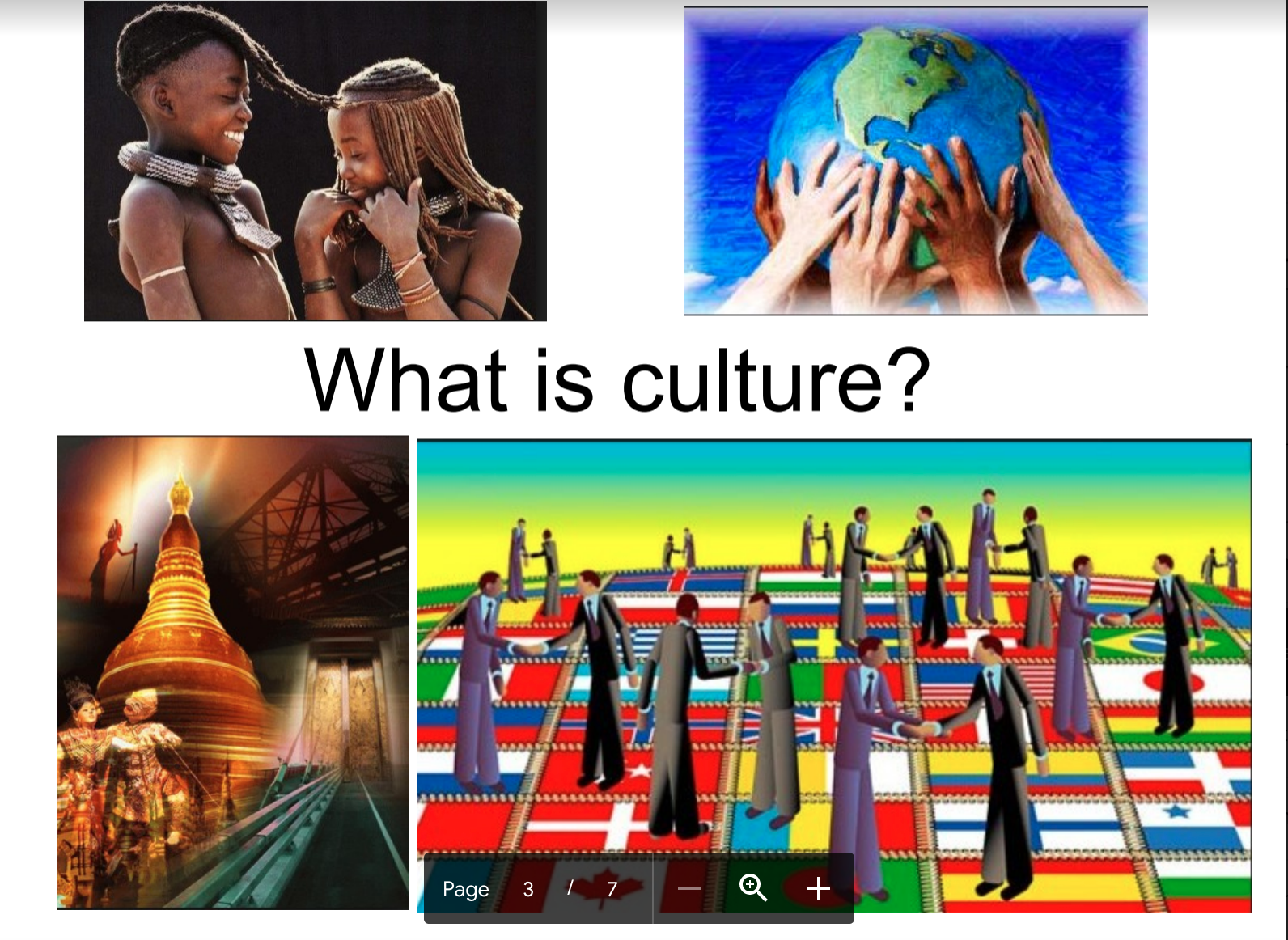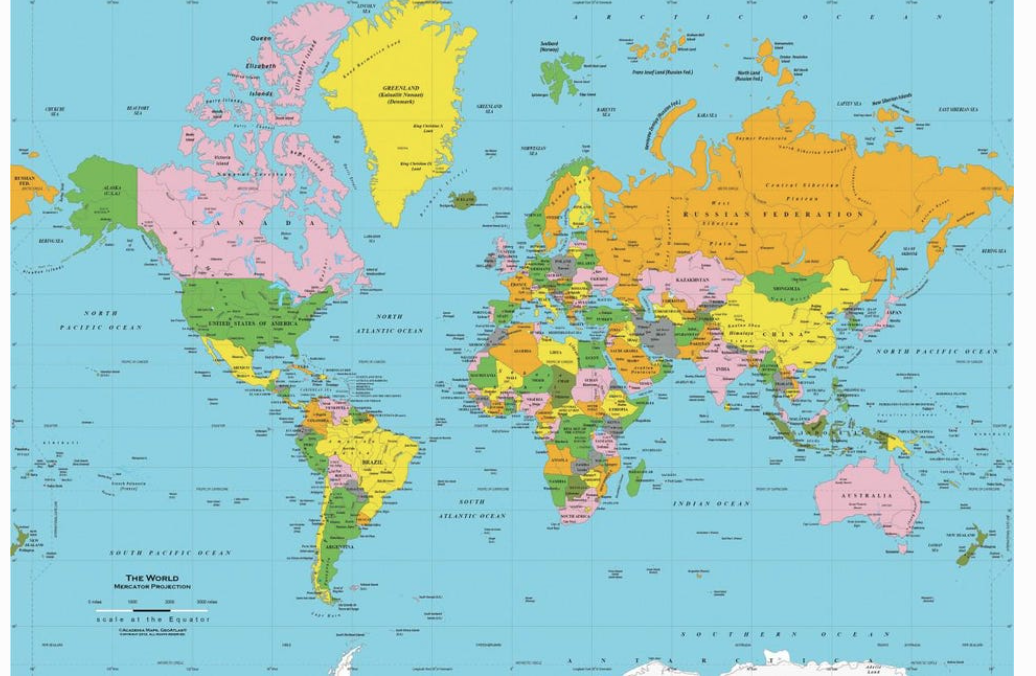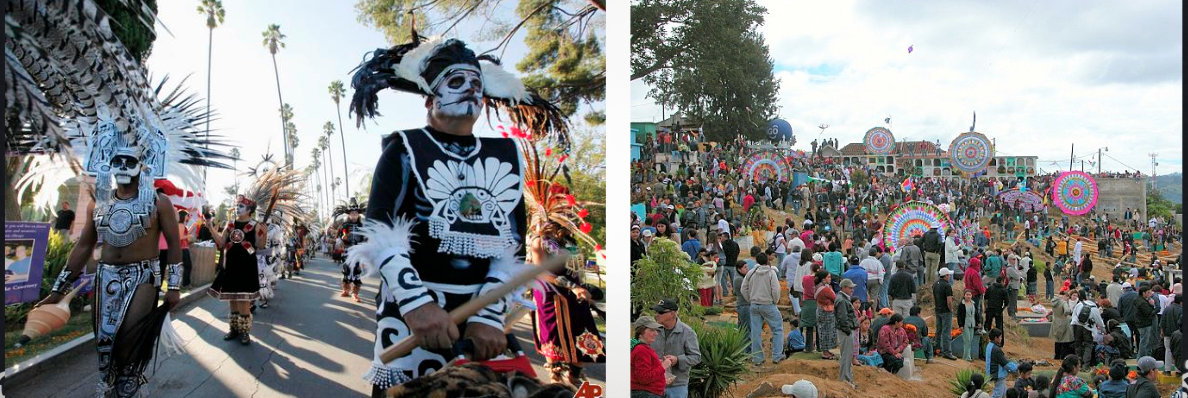7M2 Global Studies
Section outline
-
Welcome to our MHJC Online 7M2 Global Studies 2022 course page. Please do not hesitate to contact me at mmartin@mhjc.school.nz if you have any questions about your classwork or homework. I look forward to working with you all in 2022. Ms. Martin
-
Good Morning 7M2 Global Studies!
This is your first year at Mission Heights Junior College and for me is very important to know the members of my team. For our first class together I have planned a series of activities that will allow us to get to know each other. We will discuss also which are the expectations for Global Studies.
Kia ora and welcome to your first Global Studies session.
This term we are focusing on the concepts Who am I?, Belonging and Where do I fit in?
This learning will help you to get to know all your colleagues from 7M12 before the camp.
To set the scene we will have class brainstorms and discussions about culture and what makes us who we are?


Learning Intention:
We are learning to understand the significance of culture and what makes us who we are
Success Criteria:
Identify the key aspects of culture Describe key ideas about culture and what makes us who we are Explain the importance of culture, and how each of us is unique Evaluate and reflect on how each of us has a different culture and the stereotypes and assumptions which exist. Activities:
Lesson 1:
- Introduction and welcome to year 7 Global studies.
- Brainstorm, gathering of prior knowledge
Lesson 2:
- Re-cap on last lesson and discuss today's lesson
- Powerpoint presentation. "What is Culture?"
- Discussion about what defines 'culture' and 'what is culture?'
- What makes me who I am? class discussion and listing activity.
- Self-Portrait Poster Design task
Further Learning:
You are to create an artwork describing who you are. You are to only use images and symbols to portray yourself. (use the list we made in class to help you with ideas)
The overall result will be a form of self-portraiture.
You must upload this artwork on Mission Heights Online. Do not include your name on the artwork - we need your artwork to be anonymous.
We will display these on the projector in the classroom and your peers must guess who you are by only looking at the clues they see in your artwork.
-
Learning Intention:
We are learning to understand the significance of culture and what makes us who we are
Success Criteria:
Identify the key aspects of culture Describe key ideas about culture and what makes us who we are Explain the importance of culture, and how each of us are unique Evaluate and reflect on how each of us have a different culture, and the stereotypes and assumptions which exist. 
Lesson 1:
- Re-cap on the last lesson and discuss today's lesson
- Powerpoint presentation. "What is Culture?"
- Discussion about what defines 'culture' and 'what is culture?'
- What makes me who I am? class discussion and listing activity.
- Self-Portrait Poster Design task
Further Learning:
You are to create an artwork describing who you are. You are to only use images and symbols to portray yourself. (use the list we made in class to help you with ideas)
The overall result will be a form of self-portraiture.
You must upload this artwork on Mission Heights Online. Do not include your name on the artwork - we need your artwork to be anonymous.
We will display these on the projector in the classroom and your peers must guess who you are by only looking at the clues they see in your artwork.
EXPLORE / TŪHURA learning intentions:
- We are EXPLORING the concept of culture
- We are EXPLORING why culture is important
- We are EXPLORING key components.
- We are EXPLORING key aspects of Kiwi culture
- We are EXPLORING a foreign culture and how it compares to New Zealand.
-
Learning Intention:
We are learning to understand the significance of culture and identity.
Success Criteria:
Identify the key aspects of culture and identity Describe key ideas about culture and identity and what makes us who we are Explain the importance of culture, and how each of us are unique Evaluate and reflect on how each of us have a different culture, and the stereotypes and assumptions which exist. 
This week we are focusing in NZ identity, Kiwiana.
Monday Activity:
1. Our definition of National Identity:
National Identity is what makes a country unique. Each country has a personality/nationality, and this is why our world has different types of identities. National Identity is made by the beliefs of the country, music, food, languages, buildings, landmarks etc.
Finish the Mind Map of What do you think of when you hear ‘New Zealand identity’ or ‘kiwiana’(include symbols, words and pictures in the box below. You could also include titles of songs, poems or other literature). There are around 34 symbols, let's see how many you can identify in your mind map.
Deciding what makes Kiwiana depends a lot on who you are, your background culture and other influences that you have grown up with. For something to get the name Kiwiana it may have to meet the following requirement.
- Be recognized as familiar to many people across New Zealand
- Have stood the test of time (popular over time also)
- Hold a special memory or positive appeal
- It usually reflects a value/s or ideal/s that many people hold
- They are quite often unique to that community/country
EXPLORE / TŪHURA learning intentions:
- We are EXPLORING the concept of culture
- We are EXPLORING why culture is important
- We are EXPLORING key components.
- We are EXPLORING key aspects of Kiwi culture
- We are EXPLORING a foreign culture and how it compares to New Zealand.
-
Learning Intention:
We are learning to understand the significance of culture and identity.
Success Criteria:
Identify the key aspects of culture and identity Describe key ideas about culture and identity and what makes us who we are Explain the importance of culture, and how each of us are unique Evaluate and reflect on how each of us has a different culture and the stereotypes and assumptions which exist. 
This week we are finishing on NZ identity and Kiwiana.
Activities in Google classroomScavenger Hunt Kiwiana
What makes you a Kiwi!
EXPLORE / TŪHURA learning intentions:
- We are EXPLORING the concept of culture
- We are EXPLORING why culture is important
- We are EXPLORING key components.
- We are EXPLORING key aspects of Kiwi culture
- We are EXPLORING a foreign culture and how it compares to New Zealand.
-
This week we are focussing on Multiculturalism in New Zealand.
Firstly what is this? is a system of beliefs and behaviors that recognizes and respects the presence of all diverse groups in an organization or society, acknowledges and values their socio-cultural differences.FOCUS / ARONGA learning intentions:
- We are FOCUSING on identifying key concepts: multiculturalism, diversity. prejudice, equality.
- We are FOCUSING classifying the negatives and positives of multiculturalism.
- We are FOCUSING on understand our country has a diverse population.
- We are FOCUSING on describing where our diversity comes from
- We are FOCUSING to appreciate the benefits of diversity and celebrate differences.
ACTIVITES
1. DISCUSSION MULTICULARILISM
2. POSITIVES AND NEGATIVES
3. POSTER DIVERSITY
-
This week we are building our NZ DIVERSITY WALL.
Two important key terms for this week are assimilation and integration.

Activities
1. Cultural Assimilation and the Power of a Name
2. Extension activity: Reading hard copy
3. All google classroom activities up to date
FOCUS / ARONGA learning intentions:
- We are FOCUSING on identifying key concepts: multiculturalism, diversity. prejudice, equality.
- We are FOCUSING classifying negatives and positives of multiculturalism.
- We are FOCUSING on Understand our country has a diverse population.
- We are FOCUSING on describing where our diversity comes from
- We are FOCUSING to appreciate the benefits of diversity and celebrate difference.
-
Multicultural New Zealand - Assimilating to Our Home Sweet Home in the South Pacific
This week we will finish to enable you to have a better understanding of how multicultural New Zealand works, and the different cultural protocols we have, this assessment task will require you to research and design a presentation of your choice, on the features of your own cultural identity and New Zealand's many cultural identities, and examine the impact of these identities on each other.To complete this assignment you will need to use the resources used in class, especially about New Zealand identity, and the activity about ‘Who Am I’.
Create your own poster or booklet that includes visuals.
GLOBAL STUDIES
You must answer these two questions:
A description of what New Zealand culture is today. Use the word bank below to help you.
How New Zealand culture has impacted your cultural identity and how your cultural identity has impacted New Zealand's cultural identity. Discuss both positive and negative impacts.
AND answer one (or more) of the following questions:
A definition of National Identity.
The ways in which your own cultural group interacts in New Zealand society. For example, what foods or customs are shared with the wider community? (I think an example might be good here so they clearly understand what it is we want).
Significant cultural events that your own cultural group celebrates in New Zealand and their meaning.
Global Word Bank:
Culture
Multiculturalism (what it is and why it is important to New Zealand; tolerance and inclusion).
Beliefs Racism Diversity Tolerance Equality Discrimination Racism Assimilation Identity
PLAN & DO / WHAKAMAHI learning intentions:
- We are PLANNING to prepare a presentation to demonstrate our understanding of how the features of New Zealand and their own cultural identities have impacted each other.
-

For the last week of the term, we are going to have a starter with our map skills
Learning Objectives:
1. be able to work as a team and manage time effectively to complete a task. Be able to name and locate the different continents on a world map.
2. Bename and describe some of the key features of the different continents3. be able to define ‘local’, ‘national’ and international’
4. be able to see how countries are connected
Activities
1. 5 Minute SILENT Starter
Name the 6 continents (A-F) and then name 3 countries within that continent - Google Classroom
2. Choose one of the continents to write a paragraph about. Use your grid to help with the FACTS and INFORMATION and the sentences below for the STRUCTURE- Google classroom
3. Making mapping connections- Google classroom -

Famous Scientists & How they Changed the World
The Early Astronomers and how they Understood the World around them.’
This week we will learn about the lives of famous scientists, how they refused to give up in the face of adversity, and how their discoveries have changed how we look at our world. It will also look at the lives of famous female scientists and how they have often not received the recognition that they deserved for their discoveries.
Big Idea: Universe-Matariki
Learning Intentions: We are learning to (WALT)...
- Explore famous scientists, their theories, places of origin, and their culture
- Document scientific viewpoints of famous scientists throughout history
- Discuss geographical region, culture, gender, and other factors affecting scientific theories and discoveries
Achievement Objectives:
- Understand how exploration and innovation create opportunities and challenges for people, places, and environments.
Success Criteria: I can/have...
- Identify the main explorers of the universe in history
- completed the Explore the Famous Scientists
- described the beginning of the wondering of the universe and why
Activities:
1. Brainstorm
What is a Scientist?/‘The History of Astronomy.
2. https://www.youtube.com/watch?v=GevV1yvMJbc
While you are watching the video, think about the processes of scientific inquiry and the nature of science
3. Use the handout, Famous Scientists and work in groups.
4. Place the scientists on the world map.
5. Discuss how science is an accumulated contribution of different scientists coming from different cultures throughout many periods.
EXPLORE / TŪHURA learning intentions:
- We are EXPLORING... early explanations by the first astronomers about the origin and nature of the universe.
-
For tens of thousands of years, human beings have been fascinated by the patterns of stars in the sky above Earth. Early on, they noticed that the Moon changed shape from night tonight as well as its position among the stars. People in different cultures wanted to figure out what was happening, so they studied the skies and made observations and measurements.
Today we are going to learn about some of the most influential astronomers who made major contributions to understanding the world around them.
Success Criteria: I can/have...
Students will gain an understanding of how early astronomers in different cultures attempted to understand the nature of the universe.
Activities:
- a. Write down the following definition of ‘Astronomy’
- Next watch the video clip on the difference between AD and BC, then answer the questions below. ‘What does BC/AD Mean?’ https://www.youtube.com/watch?v=Y7veVKqU3IA
Task 3: As a class, we will watch the video clip on the history of Astronomy. https://www.youtube.com/watch?v=RVXFrDYxm80 (14:06 sec.)
Task 1: Read the article below on some of the most important early astronomers. Once you have read the article, in your colorful A4 write a heading and list 3 dot-points in your own words, about their accomplishments or life. The first one has been done as an example.
.
EXPLORE / TŪHURA learning intentions:
- We are EXPLORING... early explanations by the first astronomers about the origin and nature of the universe.
-
FOCUS / ARONGA learning intentions:
- We are FOCUSING to develop the skill to place key events in date order.We are FOCUSING to work out which century certain events occur in.
- We are FOCUSING to classify events in a timeline
- We are FOCUSING to identify anachronisms and how they are used by historians.
- We are FOCUSING on adapting normal number into Roman numerals
EXPLORE / TŪHURA learning intentions:
- We are EXPLORING... early explanations by the first astronomers about the origin and nature of the universe.
The Early Astronomers and How they Understood the World Around them
Week 3, Lesson 1
Success Criteria
Students will gain an understanding of how early astronomers in different cultures attempted to understand the nature of the universe.
Task 1: Open your Red Book and write down today’s date and ‘Lesson 1: The life of a Famous Early Astronomer.’
Today we are going to revisit Lesson 2 from last week. Students are going to pick out ONE of the astronomers who we have already looked at – EITHER Nicolaus Copernicus or Galileo Galilei.
Imagine you are a reporter who works for the Star newspaper (get it – ‘Star’ newspaper) and you could go back in time and interview your chosen astronomer. Using information you can find online, write a story about their discoveries and how they got into trouble with the teachings of the Church. In your article, include:
1. a catchy title
2. when and where they lived (dates of birth and death)
3. how did their discoveries change the way humans looked at the universe?
4. how do they get into trouble with the Church and the consequences?
-
FOCUS / ARONGA learning intentions:
- We are FOCUSING to develop the skill to place key events in date order.We are FOCUSING to work out which century certain events occur in.
- We are FOCUSING to classify events in a timeline
- We are FOCUSING to identify anachronisms and how they are used by historians.
- We are FOCUSING on adapting normal number into Roman numerals
This week:
To be able to place key events in date order.
To add to your glossary of keywords
Success criteria
By the end of today’s lesson can you
Give a definition of the word chronology
Place events in chronological order
Begin to work out which century certain events occur in.
Activities:
1, Mix and Match (resources below)
2. Write the meaning of the word Chronology (resources below)
3. Put the following events in chronological order (resources below)
4. How do I work out the century? )(resources below)
5. Building a Timeline (resources below)
-
FOCUS / ARONGA learning intentions:
- We are FOCUSING to develop the skill to place key events in date order.We are FOCUSING to work out which century certain events occur in.
- We are FOCUSING to classify events in a timeline
- We are FOCUSING to identify anachronisms and how they are used by historians.
- We are FOCUSING on adapting normal number into Roman numerals
Kia ora this week we will continue to sharpen our timeline construction skills.
Given that students will not be in class Lesson 1 - I would like you to complete the Current Event Activity. During classes 2 and 3 we will focus on timelines but this is best done in class and in person.
Success Criteria: I can/have...
- Read roman numbers
- transform Arabic numbers into Roman numbers
- explain change and continuity in History.
Activities:
- Finish Timeline - Resource in MHOL-
- Roman numbers -google classroom sheet
Homework:
Write here... -
FOCUS / ARONGA learning intentions:
- We are FOCUSING to develop the skill to place key events in date order.We are FOCUSING to work out which century certain events occur in.
- We are FOCUSING to classify events in a timeline
- We are FOCUSING to identify anachronisms and how they are used by historians.
- We are FOCUSING on adapting normal number into Roman numerals
MATAURANGA MAORI AND ASTRONOMY
Success Criteria: I can/have...
At the end of this week, students will have a basic understanding of Mātauranga Māori (Māori knowledge) in relation to astronomy, and how Māori used the stars to navigate the ocean, plant crops by a season of the year, harvest kaimoana, and to tell the time.
Activities:
- DEFINITIONS-GOOGLE CLASSROOM
- WATCH DOCUMENTARY AND ANSWER THE QUESTIONS-GOOGLE CLASSROOM
Homework:
Write here... -
PLAN & DO / WHAKAMAHI learning intentions:
- We are PLANNING to read critically articles and watch a movie based on real events so that we can identify key factors to determine what is true or not.
Sputnik’s Launch Begins the Space Race to the Moon & Animals astronauts
Success Criteria: I can/have...
Describe the story of the space race between Russia and the United States and be able to describe the fear it created.
I can write the biography of Laika.
Activities:
- Quiz Space race
- Questions (google classroom)
- Laika biography
Homework:
Write here... -
PLAN & DO / WHAKAMAHI learning intentions:
- We are PLANNING to read critically articles and watch a movie based on real events so that we can identify key factors to determine what is true or not.
This week is about how a radio play airing in 1938, frightened many Americans into believing that the world was being invaded by Martians. It is a case study in critical thinking.
There were several different actions that listeners could have done to quickly figure out that the broadcast was fake. How did it happen? Could it happen again? Could such a scare ever occur in New Zealand? This lesson will help to answer these and other questions.
Success Criteria: I can/have...
- critically evaluate information that is presented by media outlets and will be able to identify key factors that determine whether or not a the particular source is credible and whether the event in question actually happened or not.
Activities:
- Task 1 (optional – which means you don’t have to listen). If you would like to listen to the broadcast, you can find it here: https://www.youtube.com/watch?v=9q7tN7MhQ4I
- Read the Broad Haven Article then choose at least three of the tasks below to complete; (Google classroom)
-
Hidden Figures Study Guide:
A Story about the Incredible Women Behind the Space RaceWe are going to watch the movie ‘Hidden Figures’ which is based on the book Hidden Figures by Margot Lee Shetterly. It is the true story of three African-American women at NASA (the National Aeronautics and Space Administration). Their names are 1) Katherine Johnson, 2) Dorothy Vaughan, and 3) Mary Jackson.
The movie took place at a time in the United States when African Americans in many parts of the country, were segregated (separated). In some places there were separate swimming pools, water fountains and even toilets. We will be watching the movie in class – if you are away, you can access the film by going to Google Drive, Shared Drives, Library, Movies, then type into the search bar – ‘Hidden Figures.’
Write out the following questions in your Red Books and answer them.
The 3 women in the film were discriminated against throughout the film including having to use separate toilets. Go online and look up ‘The Jim Crow Laws.’ You may visit one of the following excellent sites below, then answer the questions:
https://www.khanacademy.org/humanities/us-history/the-gilded-age/south-after-civil-war/a/jim-crow
https://www.ducksters.com/history/civil_rights/jim_crow_laws.php
https://kids.britannica.com/kids/article/Jim-Crow-laws/599873
Questions to be answered in your Red Books: segregation between blacks and whites that took place in the film.
3) Make a list of as many Jim Crow Laws as you can find (use the websites above).
4. Has racial segregation (separation) ever taken place in New Zealand? Yes. Have a read of the following article and write at least 10 key dot-points that give examples of racial segregation in our history. Here is the article below – I suggest that you begin reading from the heading - ‘A Dose of Reality.’
-
EXPLORE / TŪHURA learning intentions:
- We are EXPLORING what our rights and responsibilities are and connecting these to our identity as consumers
- We are EXPLORING how to make informed decisions when it comes to the buying of goods and services
- We are EXPLORING consumerr rights under the law.
- We are exploring key terms that surround food labels and the importance of understanding basic terms and concepts.

Achievement Objectives:Understand how producers and consumers exercise their rights and meet their responsibilities.
This week we will look at needs and wants through different activities including, drawing and playing cards.Learning Intentions: We are learning to (WALT)...
- understand the relationship between Rights and Responsibilities
- identify the difference between a want and a need.
- contribute ideas through the different activities
- be able to recite basic definitions that surround the term ‘Consumerism’
Success Criteria: I can/have...
- understand the importance of being responsible in order to respect people's rights
- give a definition of what is Needs and Wants
- make a collage showing wants and needs.
Rights/Responsibilities Google Classroom
-
EXPLORE / TŪHURA learning intentions:
- We are EXPLORING what our rights and responsibilities are and connecting these to our identity as consumers
- We are EXPLORING how to make informed decisions when it comes to the buying of goods and services
- We are EXPLORING consumerr rights under the law.
- We are exploring key terms that surround food labels and the importance of understanding basic terms and concepts.
Achievement Objectives:
Understand how producers and consumers exercise their rights and meet their responsibilities.

This week we are going to be aware of the many products and services that they consume on a daily basis. They will also have a greater awareness of the way certain companies target children to consume unhealthy products and whether it is morally appropriate.
Learning Intentions: We are learning to (WALT)...
- understand the relationship between Rights and Responsibilities
- identify reasons why we buy
- contribute ideas through the different activities
- be able to recite basic definitions that surround the term ‘Consumerism’
Success Criteria: I can/have...
- understand the importance of being responsible in order to respect people's rights
- list how companies are targeting kids to buy unhealthy food
Activities (Google classroom):
- Class discussion
- Why we buy
- Reasons why we buy
Watch the clip, ‘Compilation of Junk Food Commercials aimed at children and teens’ at:
(4:18 sec.)
4. Reading article
5. They are after you -
EXPLORE / TŪHURA learning intentions:
- We are EXPLORING what our rights and responsibilities are and connecting these to our identity as consumers
- We are EXPLORING how to make informed decisions when it comes to the buying of goods and services
- We are EXPLORING consumer rights under the law.
- We are exploring key terms that surround food labels and the importance of understanding basic terms and concepts.

Achievement Objectives:
Understand how producers and consumers exercise their rights and meet their responsibilities.
Learning Intentions: We are learning to (WALT)...
Success Criteria: I can/have...- become familiar with key terms and concepts pertaining to food labels
- Read food labels and know what is healthy and what is not
Activities:
1. Read the label
(Google classroom)
-
EXPLORE / TŪHURA learning intentions:
- We are EXPLORING what our rights and responsibilities are and connecting these to our identity as consumers
- We are EXPLORING how to make informed decisions when it comes to the buying of goods and services
- We are EXPLORING consumerr rights under the law.
- We are exploring key terms that surround food labels and the importance of understanding basic terms and concepts.
Success Criteria: I can/have...
- describe 3 substances that are used by major corporations to get us to consume more food than we need
Activities:
1. . Watch the documentary “Tricked Into Eating More…
In this documentary, Remi, a French American reporter, finds the answers to the questions we all ask about fast food: How to major corporations get us to consume so much processed food, and why are we so hooked on it?
Homework:
Write here... -
FOCUS / ARONGA learning intentions:
- We are FOCUSING on developing an understanding of different types of scams that are circulating in New Zealand.
Success Criteria: I can/have...
- I become familiar with what a scam is and the many different types of misleading that are circulating in New Zealand.
- Describe at least one specific mislead in detail.
Activities:
- Task 1: Scams are a huge problem in New Zealand, costing Kiwis millions of dollars each year. Watch the short video clip on a recent mobile phone scam:
- Read about each scam. Write a one or 2 sentence summary of the scam. I have completed the first scam for you. Please write it into your book.
- Task 3: Creating a scan fact sheet or poster
All activities are in Google Classroom
Homework:
Write here... -
FOCUS / ARONGA learning intentions:
- We are FOCUSING on developing an understanding of different types of scams that are circulating in New Zealand.
- We are FOCUSING on describing the laws we have in New Zealand that protect our consumer's rights.
- We are FOCUSING on how to solve when your rights when a business acts in an unfair or misleading way, including sales tactics…
 This week we will find out your consumer rights and how to resolve an issue if there is a problem with a product or service you bought.
This week we will find out your consumer rights and how to resolve an issue if there is a problem with a product or service you bought.Success Criteria: I can/have...
- Named my 8 Consumer Rights
- Recall the two laws that protect us as consumers
- Describe what each law is about
Activities:
- Name the right
- It's all good (Google classroom)
Homework:
Write here... -
PLAN & DO / WHAKAMAHI learning intentions:
- We are PLANNING to design a poster and a presentation so that we can inform consumers how to be responsible and being informed when they purchase in the supermarkets
Year 7 Global Studies Assessment 2
You and your partner will deliver an oral presentation that explains the issue your poster is addressing.
In order to capture audience attention, create a catchy title for your image.
You are going to help individuals by creating a poster to raise awareness of how supermarkets are misleading you, what to look for, and what to avoid when entering the supermarket to purchase your food.
Your oral presentation must include:
What the problem is and why this reflects the needs and wants of consumers and rights and responsibilities of producers.
The current legislation as it applies to New Zealand (Fair Trade Act-Consumer Guarantee Act) explains the different rights that New Zealand shoppers have if the products they buy do not perform to the standard that they were advertised as.
How supermarkets try to get you to buy things that you don’t really need, cannot afford, and do not intend to buy.
What marketing strategies do stores use to influence shopper choices?
Compare the prices between grocery store “house” brands and better-known national brands and compare the nutrition fact panels for these products.
Compare the cost of regular versus organic foods
Advice for consumers when purchasing.
To help stay within a budget by raising awareness of the ways that supermarkets use psychology to get you to over-spend and buy items you don’t want or need.
To choose items that are healthy; what you should look for? What ingredients are considered unhealthy in large quantities? How to evaluate the labels of various food products?
What is the best “path” for navigating a store to avoid impulse purchases of foods with low nutrient density?
-
 Exploring Halloween
Exploring Halloween
what do we know about Halloween?
Success Criteria: I can/have...
- I can understand the origins of Halloween in the United States
- I can identify were some of the traditions associated with this celebration.
Activities:
- Videos-Class Discussion
- Reading-Mind map (google classroom)“Halloween in the USA”
- How to be Safe at Halloween in New Zealand.
Reading #1: The New Zealand Police have come up with some safety tips for Halloween:
https://www.police.govt.nz/news/release/trick-or-treat-safety-street
Reading #2: Halloween can be a dangerous time for pets.
https://www.southerncrosspet.co.nz/pet-hub/tips-and-tricks/safe-halloween-for-pets/
Reading #3: The dangers of costumes, candies and coloured contact lenses
https://www.fda.gov/consumers/consumer-updates/halloween-safety-tips-costumes-candy-and-colored-contact-lenses
Homework:
Write here... - I can understand the origins of Halloween in the United States
-
EXPLORE / TŪHURA learning intentions:
- We are EXPLORING different cultural celebrations of fall festivals in different parts of the world
- We are EXPLORING the history of Halloween traditions and the modern celebration of Halloween around the world
- We are EXPLORING the day of the dead celebration and it's roots and it's evolution

Success Criteria:
How different cultures celebrate their dead, specifically focusing on the Día de los Muertos.
Students will be able to compare and contrast various cultures' Day of the Dead celebrations.
Students will be able to discuss and compare different traditions with similar meaning
Activity 1: Reading: Days of the Dead Around the World
Activity 2: DÍA DE LOS MUERTOS /A Catholic and Aztec tradition
Activity 3: Comparing Halloween and the Day of the dead
Activity 4: Complete your poster with information about the celebration
-
FOCUS / ARONGA learning intentions:
- We are FOCUSING to adapt Halloween to a new holiday
- We are FOCUSING...
- We are FOCUSING...
Current Events & Cultural Traditions
The Strange Case of the TikTok Tics
Doctors in New Zealand and around the world have recently identified a worrying trend among young people – tic disorders that are apparently spread on social media platforms like TikTok and Facebook.
Success Criteriato identify key symptoms of the current outbreak of tic disorders
to explain what is driving it.
Activities1. Watch the video ‘Believing in Seeing’ in full without stopping at: https://loadingdocs.net/believing-is-seeing/
2. Class discussion
3. Read the article and answer the questions.
4. Your mission is to improve on Halloween by creating a new super holiday.
